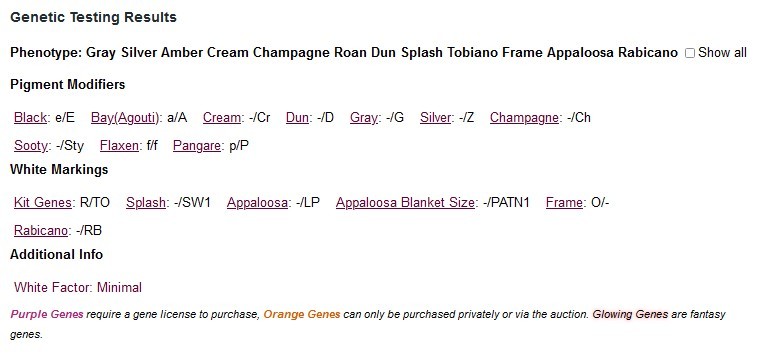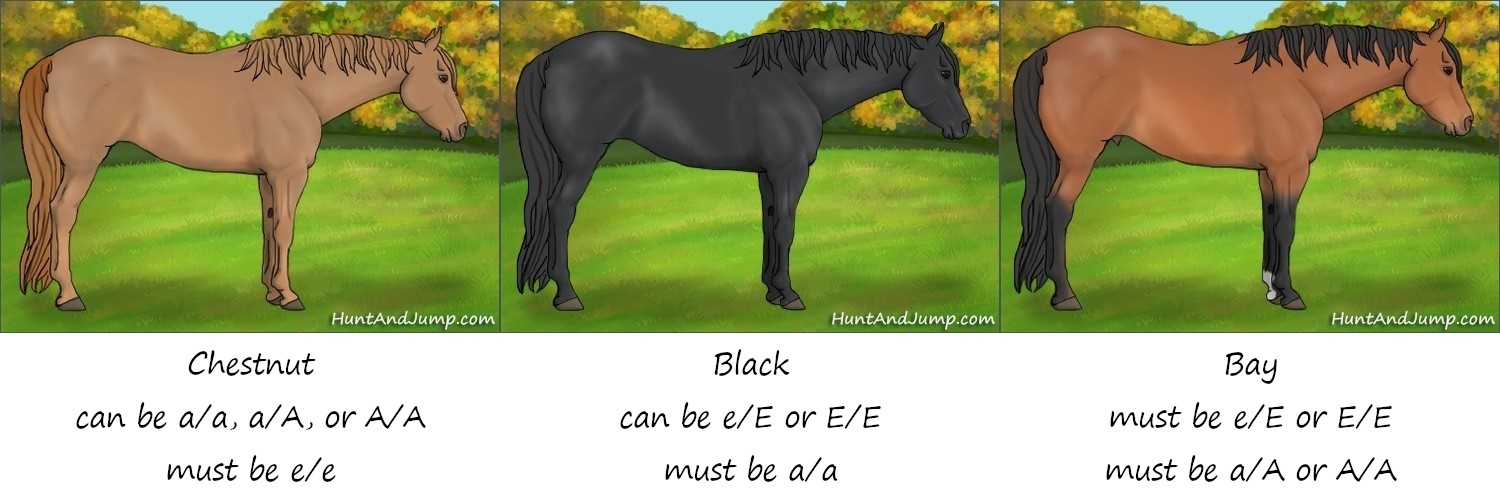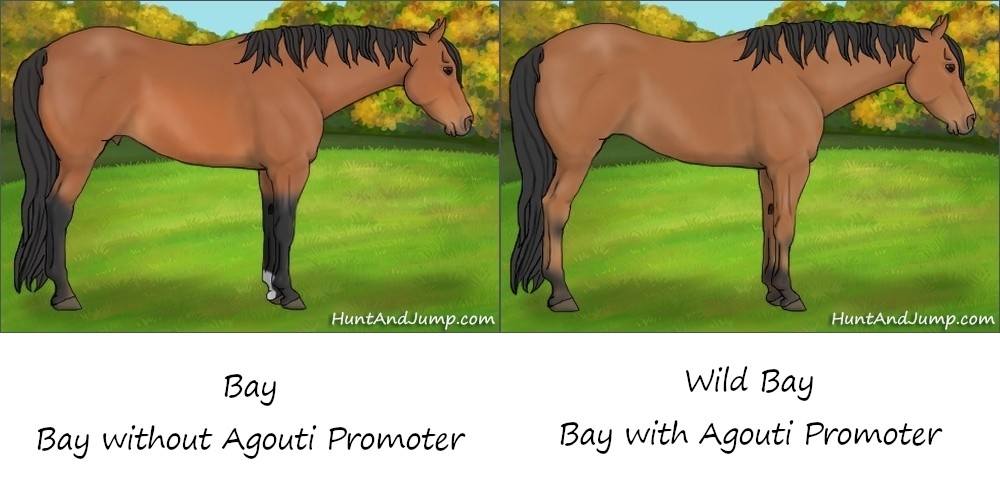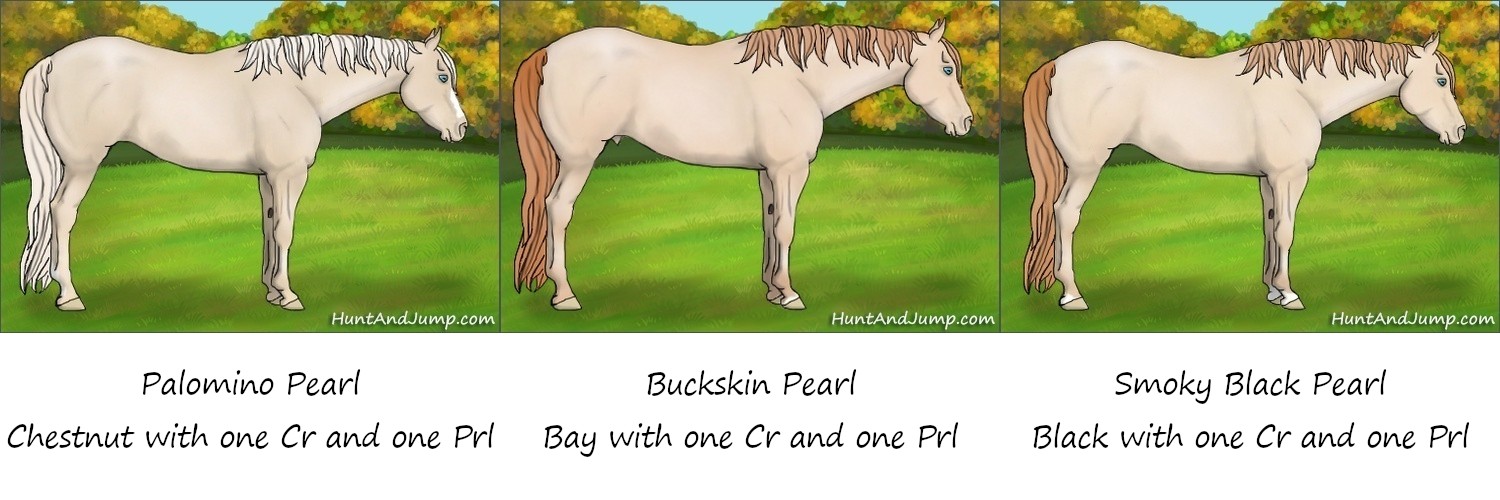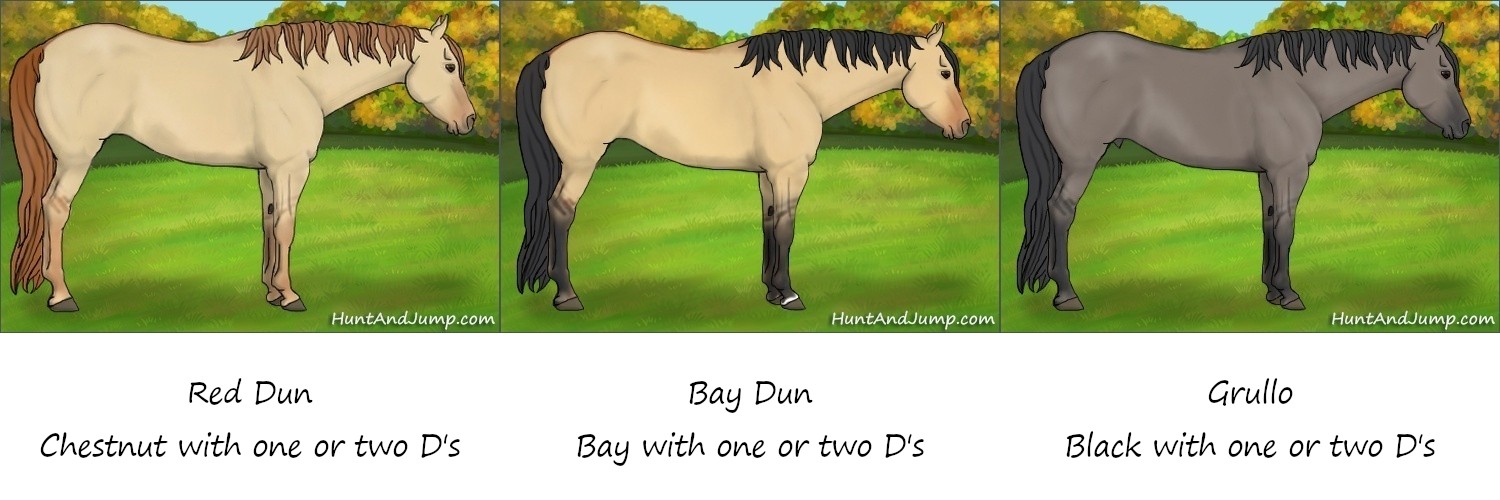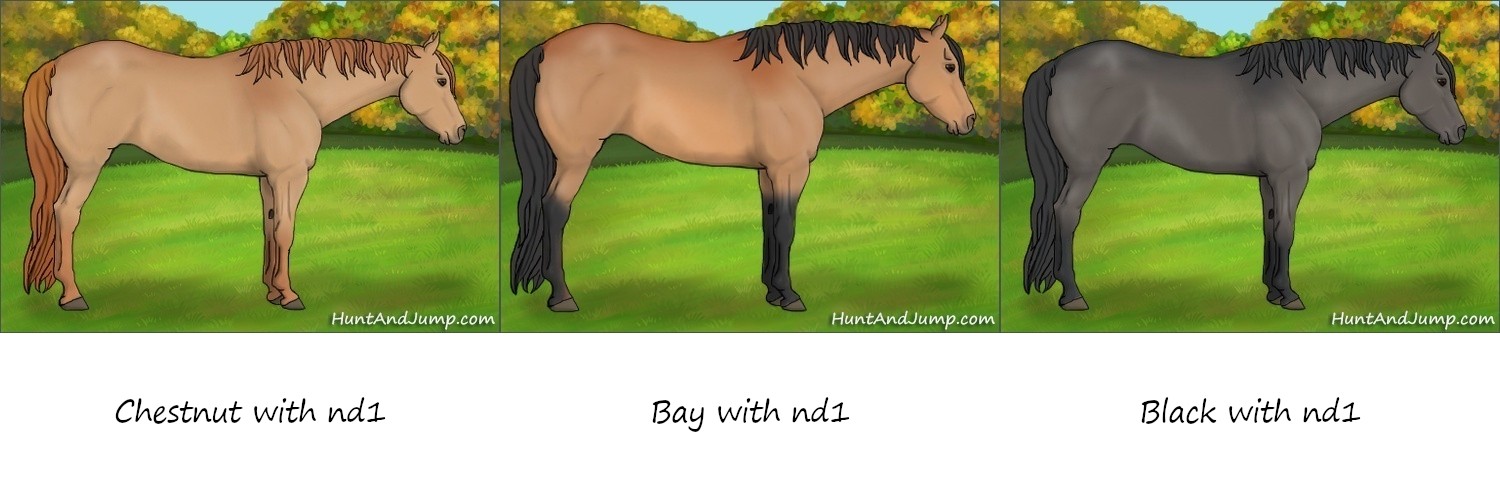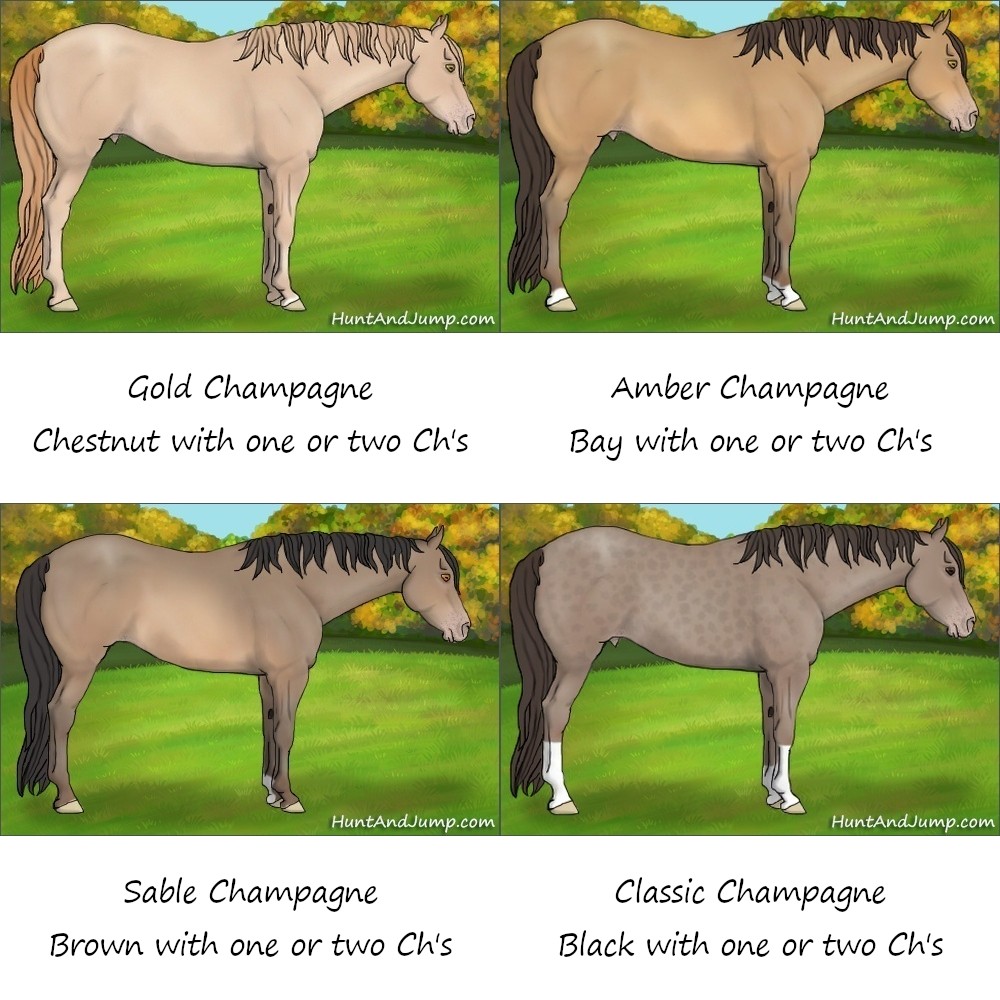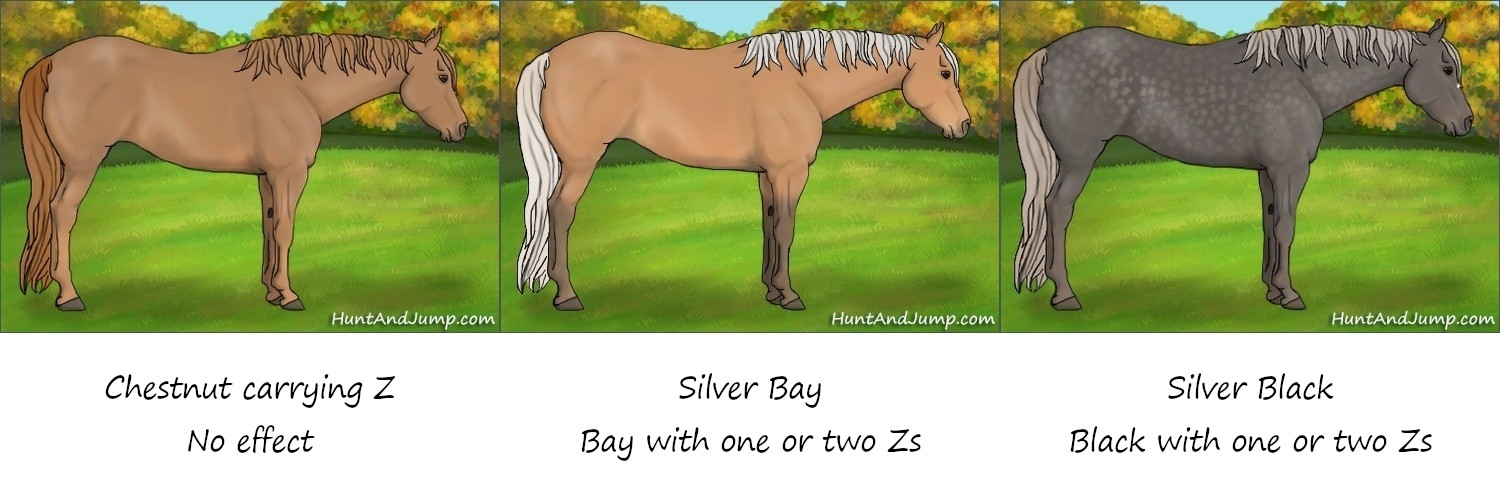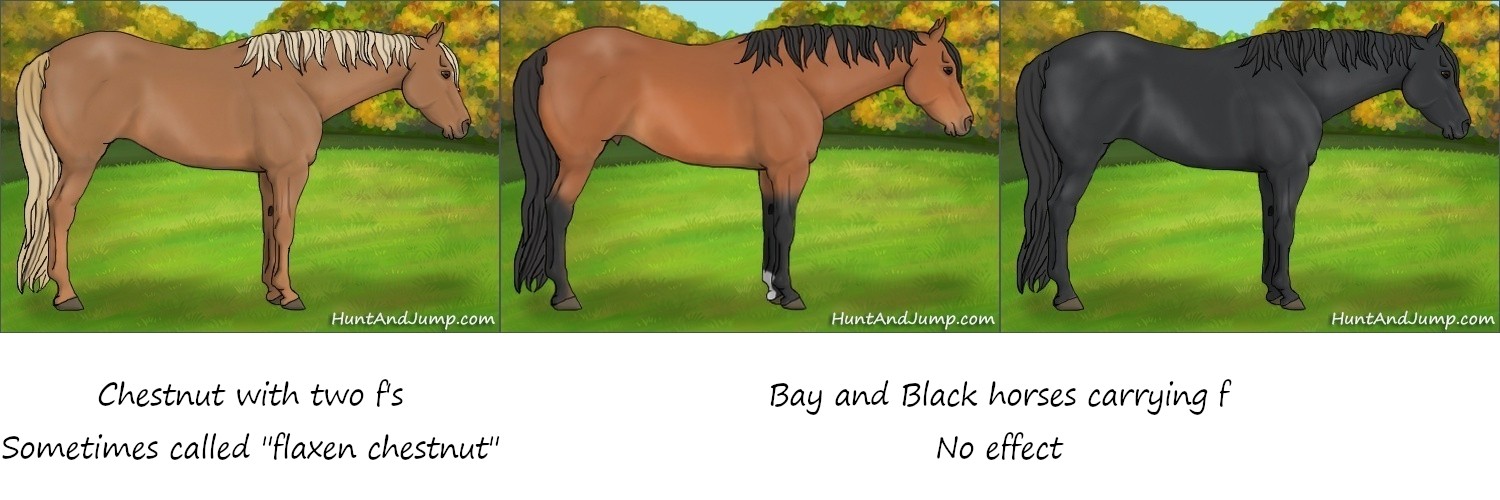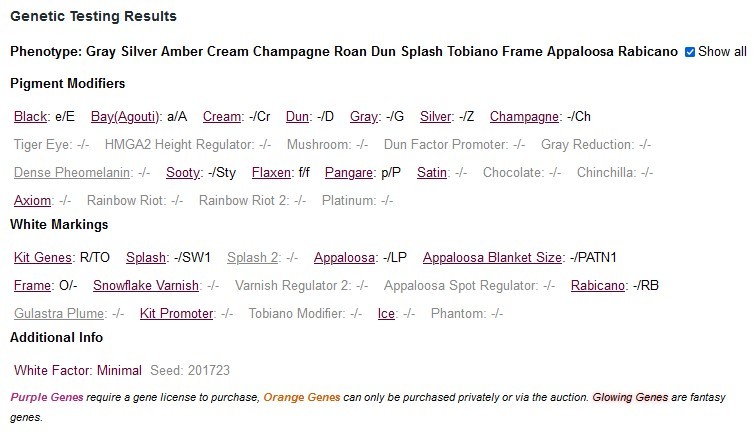How to Read Genetic Testing Results
So you've gene tested your horse and gotten the results, but what do they mean? The color name — also called phenotype — makes sense, but what about that string of letters? That's your horse's genotype, the actual genetic code for the coat color of your horse, and here we're going to break it all down and explain how to read it. This is one of the most complex genotypes that can be created in the game. If you’re just starting out, I’m sure it looks pretty confusing, but by the end of this tutorial, every part of it will make perfect sense. You may eventually find you get a quicker mental picture of the genetics of your horse by looking at the genotype rather than the phenotype. So let’s get started and break it all down. All horses have these four letters in their genotypes and they are the base of every other possible horse color. So let's zoom in for a moment on these. E represents Extension, which is responsible for giving your horse black pigment. All black horses have an uppercase E in their genotype, and only one uppercase E is required for your horse to have black pigment. If your horse has two lowercase e's, it will have no black pigment and its base coat will be entirely red pigment — most likely chestnut if no other genetic factors are at work. Since black pigment is darker than red, when it is present at all, it completely masks the red pigment "beneath." Uppercase E gives your horse black pigment. A represents Agouti, which restricts the amount of black pigment expressed on your horse's coat. Agouti works by removing black pigment from the base coat, showing the red beneath. An uppercase A removes some black pigment from your horse's body, making it a bay (red with black points). An upcoming game update to Agouti will make a second A remove even more black pigment than a single A. All bay horses have an uppercase A in their genotype. If the bay horse had two lowercase a's instead, it would be a black horse. Agouti has no effect on chestnut horses, since chestnut horses have no black pigment to be affected. Uppercase A restricts the expression of black pigment, if present. Horses with E, whether or not they have A, are known as “black based.” Horses that are e/e are known as “red based.” Almost all other genes will work by causing some modifying effect on red or black or both types of pigment. When a horse has both an uppercase and lowercase letter, it makes no difference to the phenotype which comes first. A/a will look the same as a/A. The only thing to keep in mind about the order that the first letter was inherited from the sire and the second was inherited from the dam. If you see an A* in your horse's genotype, treat it as though it were A. It will soon be removed as part of an ongoing update to Agouti to make it better represent the most up-to-date scientific research on horse color genetics. But what does it really mean for a letter to be uppercase or lowercase? A lowercase letter doesn't necessarily mean that your horse doesn't have the gene, it indicates allele dominance. So, before we go further into the rest of the letters in the genotype above, let’s take a moment to explain some basic genetics terms. Each pair of letters in a horse’s genotype represents a gene and each letter within each pair represents an allele for that gene. An allele is a version of the gene, i.e. Extension is the gene and E and e are the two versions (alleles) it can come in. Some genes have more than two possible alleles, but only two can be carried by any individual horse, one inherited from the sire and one from the dam. If the letter that represents an allele is uppercase, it means that the allele is dominant. If the letter is lowercase, it means that the allele is recessive. Dominant alleles will overpower recessive alleles and will show even if only one copy is present, i.e. E/e will still make a horse black, even though a lowercase e is present. This means that a horse can “carry for” a recessive allele without showing it, and must be gene tested before you can be sure that they have it. Recessive alleles require two copies to show because if a more dominant allele were present, it would overpower the recessive allele, i.e. chestnut horses must be e/e. In other words, recessive alleles must be homozygous to show on your horse’s coat. A horse that has two of the same allele for a particular gene is homozygous (sometimes abbreviated hom) for that gene. If the two alleles are different, the horse is heterozygous (sometimes abbreviated het) for that gene. A and E are both dominant, so will show in the heterozygous state. The alleles a and e are both recessive, so will show only in the homozygous state. This is also important because some genes will express differently when they are heterozygous. This is called incomplete dominance and will be explained further down. Below is a complete list of genes and their alleles (beyond Extension and Agouti) that can be found on regular created horses. Not all of these genes will change the horse's color name if that coat color doesn't have a specific name, but they can still create varied and unique looks. These are genes that modify the pigments of the base coats we've already mentioned. They can restrict, dilute, or darken existing pigments. Some only affect red pigment, some only affect black pigment, and some will affect both. Some genes will only show on the horse's coat when certain other genes are present. We'll get into all of this as we break it down and talk about each gene. When A is present on black-based horses, agouti promoter restricts the expression of black pigment even further, turning bay horses into "wild bay." It is dominant and will show even if only one copy is present. Two copies does not result in further black pigment restriction. Wild bay is still called “bay” by color name on your horse’s page. Alleles: cream, pearl, (plus two non-creatable) Cream (Cr) and pearl (Prl) both dilute red pigment significantly and black pigment slightly. One Cr has some effect and two Cr's have more effect. This is known as incomplete dominance, which is a third level of dominance that causes two copies of the allele to have even more effect than one. Unlike purely dominant or recessive alleles, this makes all three possible genotypes — both homozygous states and the heterozygous state — have different phenotypes. The effect is so dramatic with the cream gene that these three states also each have their own color names.
As you can see, cream can be quite overwhelming when homozygous, so much so that it can be almost impossible to tell the difference between chestnut, bay, and black horses when they also carry two copies of cream. They look almost white, but actually it is just red and black pigments that are extremely diluted. (Actual white horses are covered in the White Markings section. link*) The next allele of the cream gene, pearl, is much more subtle and almost unnoticeable in the heterozygous state, but in the homozygous state, it creates a rich and metallic diluted effect.
Cream and pearl can also create different effects when mixed. Horses that are heterozygous for both cream and pearl will have slightly darker coats than the homozygous cream horses but slightly lighter than the homozygous pearl horses with also a slight metallic effect. Alleles: dun, non-dun 1, non-dun 2, (plus one non-createable) Dun (D) is the most dominant allele of the dun gene and dilutes the pigment of the base coat on the body, leaving the legs, mane, and tail, and often primitive leg and dorsal stripes darker (the dark areas are actually the original color). All horses with a D allele will show as dun, regardless of the base coat. Chestnuts will become red duns, bays become bay duns, and black duns have a special name — grullo. Dun is a fully dominant allele, so two D’s have no more effect than one. Non-dun 2 is the most common non-dun allele and is shown in the genome as a dash (-) which is often used to denote the non-carrier allele of a gene. All the previous example horses on this page have been homozygous for non-dun 2. Non-dun 1 (nd1) is another non-dun allele that, like dun, also lightens the body of the coat, leaving the topline darker, but is much more subtle and doesn’t result in primitive markings. It’s also incomplete dominant, so two copies can have more effect than one, though this is not always the case as the extent of its expression can be highly varied. Alleles: champagne Champagne (Ch) is a dominant allele that lightens the entire base coat to a muted shade with a metallic sheen and can also lighten the eye color. It lightens both red and black pigment, is fully dominant, and requires only one copy to show. Two copies has no more effect than one copy. You may notice a forth “base coat” included in the image above — brown (*link to update on what makes a bay horse brown). This is just a dark bay that has darker red tones from carrying darkening genes (as we’ll get into below), but among the champagnes it has a special name to set it apart from other bays with champagne like amber champagnes. Sable champagnes can also have “reverse dapples” like the classic champagne pictured above. Reverse dapples are one of the natural variations that a horse’s coat can have. Not all classic and sable champagnes have reverse dapples, but rerolling your horse’s portrait can get them to show. (*link to page on phenotype variations and how/why to reroll portraits.) Alleles: silver Silver (Z) is a dilution gene that only affects black pigment, turning it into a lightened, silvery color. It is fully dominant, so it requires only one copy to show and two copies has no more effect than one copy. It has no effect on red pigment, so red-based horses will not show the gene but can still carry it and pass it on to offspring. Silver blacks can sometimes display a unique type of dapples unrelated to other forms of dappling. Alleles: flaxen Flaxen (f) is another dilution gene but unlike silver, it only affects red pigment and only on the mane and tail. It’s also a recessive allele, so it requires two copies to show. When homozygous and on red-based horses, it lightens the mane and tail to a flaxen color ranging in shade anywhere from a slightly lighter red to a yellowish hue to an almost white. Alleles: non-carrier, pangare, (plus one non-createable) (Fact-check what the non-carrier p pangare allele is called.) The pangare allele (P) lightens red pigment in particular areas of the coat, namely the flank, muzzle, and sometimes the legs. It is dominant, requiring only one copy to show. The effect can be very subtle and usually shows better on horses with darker coats. (To see a pangare allele with a more dramatic effect and that can also lighten black pigment, take a look at pangare plus *link.)
Alleles: gray Gray lightens all coat colors over time until the horse is completely white or “grayed out.” It doesn’t affect different colors differently. It is a dominant allele so it requires only one copy to show, but two copies of gray will lighten the coat twice as fast as one copy. A horse that’s homozygous for gray might be completely white by age 8. However, a new update has allowed a horse’s color name to include the full phenotype rather than just “gray,” so you will be able to see what color a completely grayed out horse is without having to look at their genotype.
Alleles: sooty, (plus one non-creatable) Sooty is a dominant allele that darkens both red and black pigment, though it’s much more noticeable on red pigment. Two copies has slightly more effect than one.
Alleles: dense pheomelanin Another darkening gene is dense pheomelanin (DP) which only affects red pigment (pheomelanin). It’s a dominant allele and will show with only one copy present but the effect is even stronger with two. It has no effect on black pigment.
As you can see, DP darkens chestnuts similarly to sooty, though not as much, but the bay becomes a rich red. This is sometimes called "cherry bay." Even more phenotypes and new color names become possible when we start to combine both sooty and dense pheomelanin for some extra dark horses. Sooty and dense pheomelanin can work together to create some super dark horse colors that you cannot get any other way. Sooty can also result in dappling, especially when combined with dense pheomelanin.
These colors can also be achieved with different combinations of “darkening genes” as long as they total a certain number of alleles. For example, a liver chestnut just needs three darkening alleles and can be heterozygous for Sty and homozygous for DP or homozygous for Sty and heterozygous for DP. An extra dark liver chestnut, sometimes called a “black chestnut” needs four darkening alleles, in other words, it needs to be homozygous for both Sty and DP. (link to guide with chart*) Alleles: gray I can already hear you saying, “Wait, didn’t you say that gray was a dilution gene?” Yes, that is true. Over time gray does lighten the coat until it becomes entirely white, but before this lightening progresses, gray also causes a form of “darkening” called hyperpigmentation, which can even darken black horses to an ultra jet black color.
Now that we’ve looked at what these dilution and darkening genes look like on their own, let’s see what happens when they’re combined. There are lots of phenotypes that can only be achieved with both types of pigment modifiers working together.
Let’s explore just a few more random combinations here. A more extensive list for each major combination is coming soon. (Example of stacking colors and effect on phenotype name, i.e. Silver Classic Cream Champagne Dun isn’t called Silver Smoky Grullo Champagne.)
Alleles: roan, tobiano, white 1, white 2, sabino 1, white 20, (plus five non-creatable) Kit is actually not a gene, but a locus where many genes are located. It doesn’t really matter when it comes to understanding what these markings look like, but just keep in mind that any one horse can only carry two Kit alleles, one inherited from the sire and the other from the dam. Here’s a rundown on all the createable Kit markings. You may have noticed the eye color of some of the example horses changes with the coat color. (about which genes do that, cream, champagne, splash) There’s also another gene called “tiger eye” with two alleles, TE1 and TE2, that lighten the eye color only. Both are dominant alleles and will show with only one copy present, but the effect is stronger when homozygous or when the two alleles are mixed. Tiger eye horses may have hazel, orange, or blue eyes depending on the coat color and how many copies of tiger eye are present. (Image of eye color examples) (Fact-check term usage on this) You may have noticed that not all genes have a set of two letters in our example genotype. This is because if your horse doesn’t have a dominant allele for a particular gene, there will be a dash (-) in place of a letter. If there’s a dash in place of both letters, the test results for that gene will be excluded from the genome by default, since the horse doesn’t carry the gene at all. If you want to see the genes your horse doesn’t carry, you can check the “show all” checkbox to see all possible testable genes, as shown in below. As you can see, there are a lot of genes in the game! Most of them are real, documented genes, some are hypothetical genes not yet proven scientifically to exist, and some are purely fantasy genes that exist only on HuntAndJump.com, just for fun. There are also some "hidden" genes that you won't find represented in genetic testing results, but still play a role in your horse's phenotype. These aren’t the same as the genes hidden by the “show all” check box. The truly hidden genes cannot be tested at all, though you might be able to develop an eye for spotting them in your horse’s portrait. So far, we’ve talked about genes that can be found in regular creates, but you may also see other genes on horses owned by other players. These have either been genetically edited onto the horse, inherited from an ancestor that had the gene edited on, or are the result of a special herd helper that gives the horse the gene. If you’re just starting out with horses you’ve created yourself, you most likely won’t have any of these genes in your herd. Although, you can buy horses with these genes from other players to add to your herd. Here’s a list of non-createable genes: Intro to fantasy. In addition to the genes above, there are also other non-createable genes that can only be obtained through purchase of a gene license. You can’t buy horses with these genes unless you have the license or the horse has been spayed or gelded so it can’t be bred. These genes (just like Nexus) are denoted by purple, orange, and glowing letters. Check out the fantasy gene and the closed gene pages to learn more. (links*)The Base Coat
Extension & Agouti
Dominant & Recessive Alleles: A Brief Explanation
Genes & Alleles
Dominant & Recessive
Homozygous & Heterozygous
The Genes
Pigment Modifiers
Agouti Promoter
Dilution Genes
Cream
Dun
Champagne
Silver
Flaxen
Pangare

Gray
Darkening Genes
Sooty

Dense Pheomelanin
Sooty & DP in Combination
Gray
Darkening & Dilution Genes in Combination
Other Combinations That Affect Color Name
White Markings
Kit
Splash
Rabicano
Appaloosa
PATNs 1 & 2
Varnish
Snowflake
Halo Varnish
Frame (*link to lethal white page)
Tiger Eye & Other Eye Color Effects
Additional Info
White Factor & Chrome
Chimerism Detected?
Non-Creatable Genes
Satin
Chocolate
Pangare+
Sooty+
Nexus
Fantasy & Closed Genes

